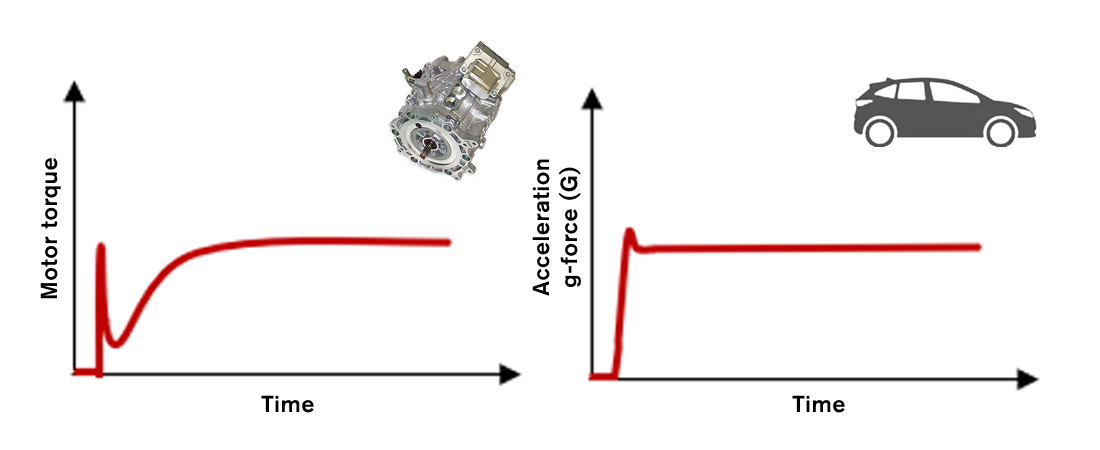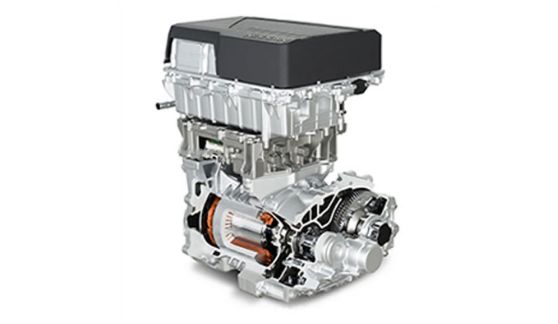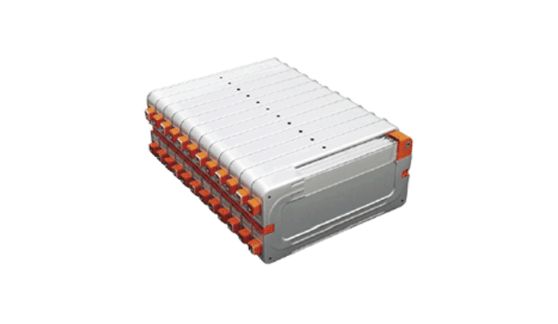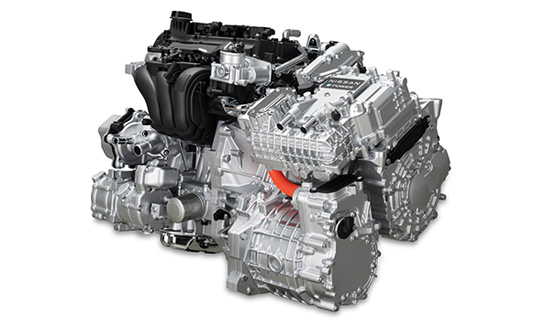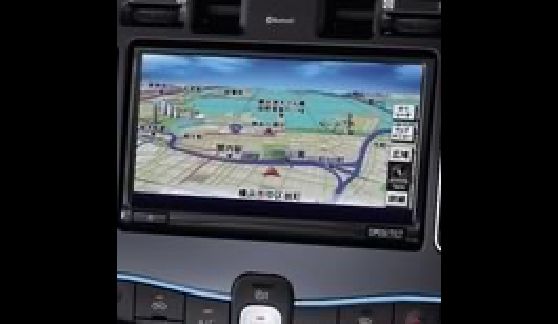e-Powertrain Control Technology
100% electric motor-driven vehicles provide a dynamic driving experience through precise acceleration control
Nissan's EVs and e-POWER cars utilize a fully-electric drive system to deliver instant and precise acceleration. While gas cars use an engine to control acceleration response through airflow and mechanical movement, the electric motors of an e-Powertrain utilize the speed of electrical signals.
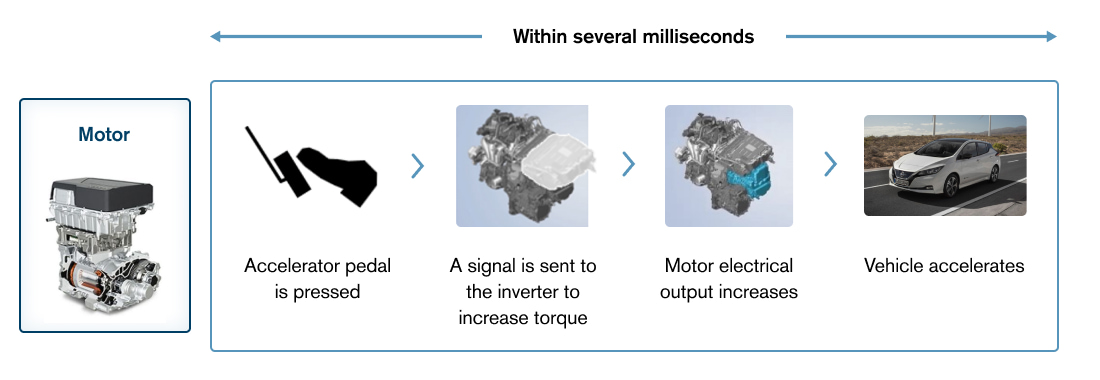
To accelerate car with an e-Powertrain, the accelerator pedal is pressed which prompts the electric motor to send a signal to the inverter to increase torque. The motor spins up which directly drives the wheels and accelerates the car.
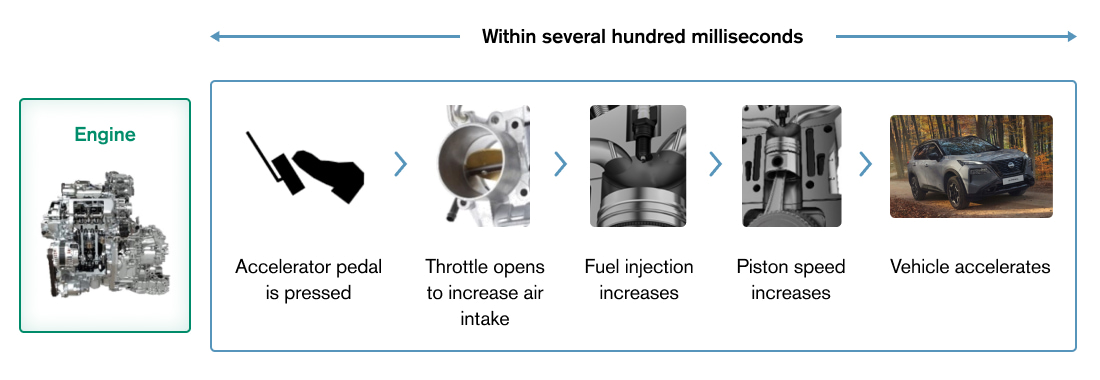
To accelerate a gas-powered car, the accelerator pedal is first pressed which causes the engine’s throttle body to open, increasing air intake and fuel to be injected into the cylinders. This causes the engine RPM to increase and power is output to the wheels, causing acceleration.
Technology functionality
Motors offer impressive responsiveness and smooth operation by responding precisely to the driver's accelerator input. Some cars use Electrically Excited Synchronous Motors (EESMs) that use magnetic forces which can also suppress motor noise during operation.
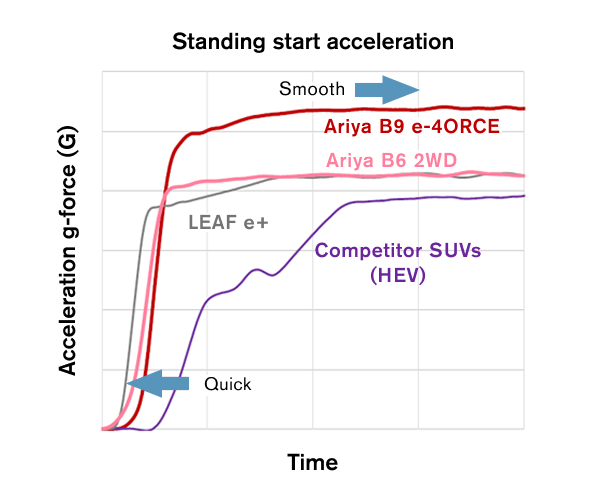
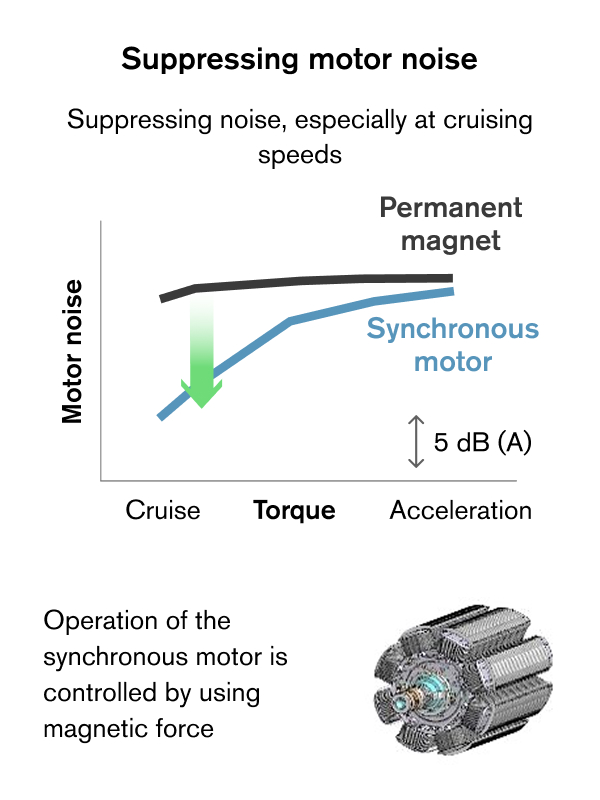
Technology configuration
High responsiveness and smooth acceleration and deceleration are made possible by Nissan's advanced motor vibration-control technology, which uniquely balances opposing performance traits. When a large amount of torque is abruptly applied to the motor, the force causes torsion in the drive shaft and vibrations occur. Nissan's technology allows the motor to instantly achieve powerful acceleration while suppressing those vibrations.
When torque is applied, the drive shaft twists and vibrations can occur.
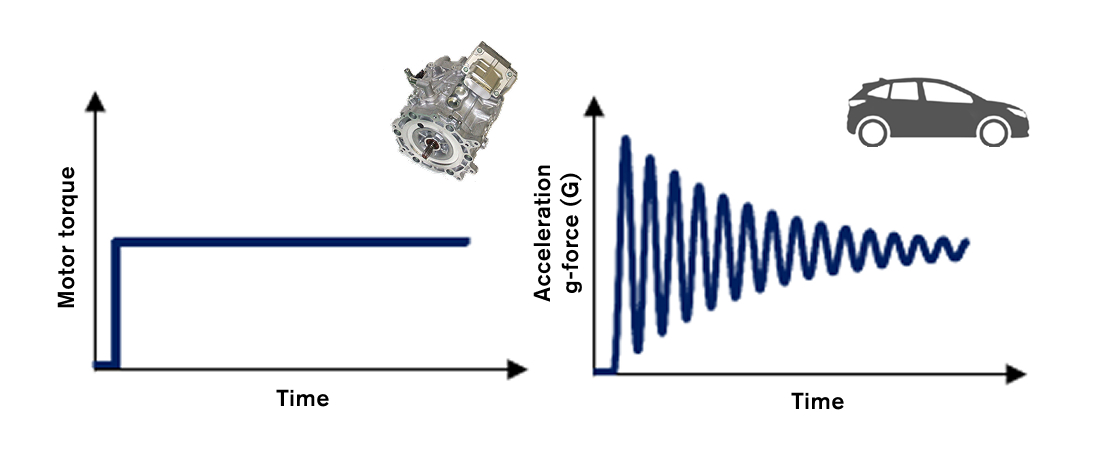
Increasing torque slowly will reduce vibration, but it also delays acceleration.
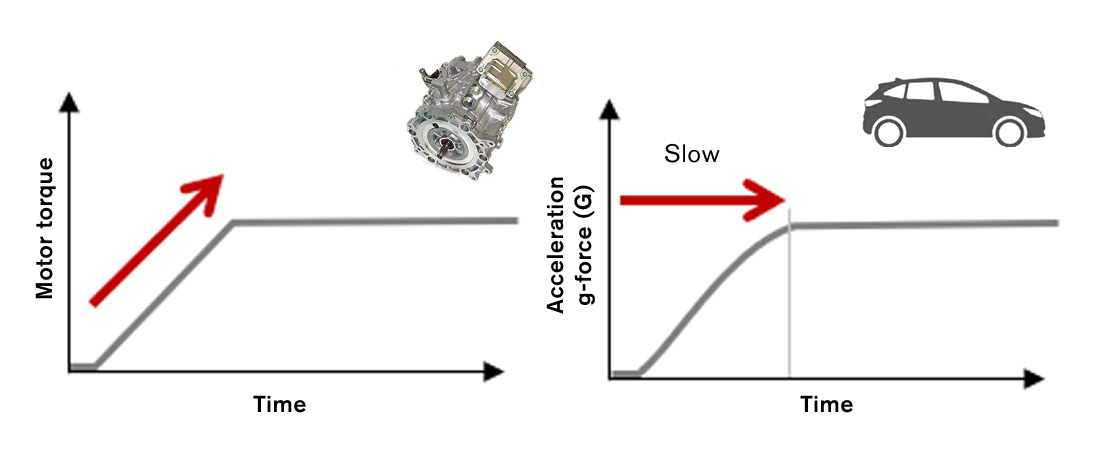
Motor vibration-control technology
Nissan's unique motor vibration-control technology achieves quick and smooth acceleration.
